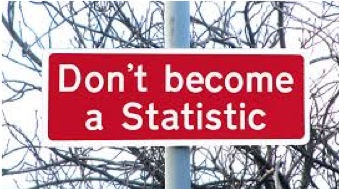Drowsy driving is suspected to be a primary cause in more than 20% of road fatalities. Most fatigue-related accidents occur during normal sleeping hours, and the more severe the crash, the more likely it is that the driver or drivers were fatigued. Fatigue is a likely factor in almost one third of single-vehicle crashes in rural areas.
Many people think fatigue is only a problem for long-distance drivers, however it is just as relevant for short-distance drives. People generally don’t become fatigued from driving. Usually they are already tired when they get behind the wheel from long hours, shift work, lack of sleep, sleep apnoea or physically demanding roles.
Your body can’t fight the need to sleep. Chemicals build up in your brain until they reach a tipping point and you will fall asleep.
Causes of drowsy driving
- a lack of quality sleep
- driving when you would normally be sleeping (overnight)
- sleep disorders such as sleep apnoea, a sleeping condition that causes tiredness throughout the day.
It’s important to remember that you can’t fight sleep.
Symptoms of fatigue
Fatigue is easy to detect, with symptoms including:
- yawning
- sore or heavy eyes
- slower reaction times
- finding you’re daydreaming and not concentrating on your driving
- driving speed creeps up or down
- impatience
- impaired driving performance such as poor gear changes
- stiffness and cramps
- loss of motivation
How fatigue affects your driving
Fatigue has a huge impact on your driving and can affect your ability to drive safely, similar to the effect of drink driving. Research shows that being awake for 17 hours has the same effect on your driving ability as a BAC (blood alcohol concentration) of 0.05. Going without sleep for 24 hours has the same effect as a BAC of 0.1, double the legal limit.
Driving while tired or fatigued can result in:
- slower reaction times
- lack of concentration – errors in calculating speed and distance are common
- reduced vigilance and poor judgement
- nodding off – even for a few seconds can result in dire consequences
How to beat driver fatigue
The only way to address fatigue is by sleeping. Make a choice not to drive when tired or follow these guidelines to prevent fatigue:
- get a good night’s sleep before heading off on a long trip
- don’t travel for more than eight to ten hours a day
- take regular breaks – at least every two hours
- share the driving wherever possible
- don’t drink alcohol before your trip. Even a small amount can significantly contribute to driver fatigue
- don’t travel at times when you’d usually be sleeping
- take a 15-minute powernap if you feel yourself becoming drowsy
Policy for Driver Safety
RME recognises that there are hazards associated with driving and particularly extended periods of driving. To that end, we have established a policy for staff and volunteers who are required to drive long distances in the course of their duties.
The policy has been developed to provide practical guidelines in relation to minimising the hazards associated with driving.
This policy will be made available to all clients on our website. We recommend that all businesses and clubs include a copy of the policy in the induction package for new staff and volunteers and utilise where long distance driving is required.
Consideration should be given to travel time when requiring members to undertake duties which require travel, including the distance the member travels from home to the first job or event, and at the end of the day from the last visit to home. They should ensure work is planned to allow team members to have a minimum ten-hour break.
